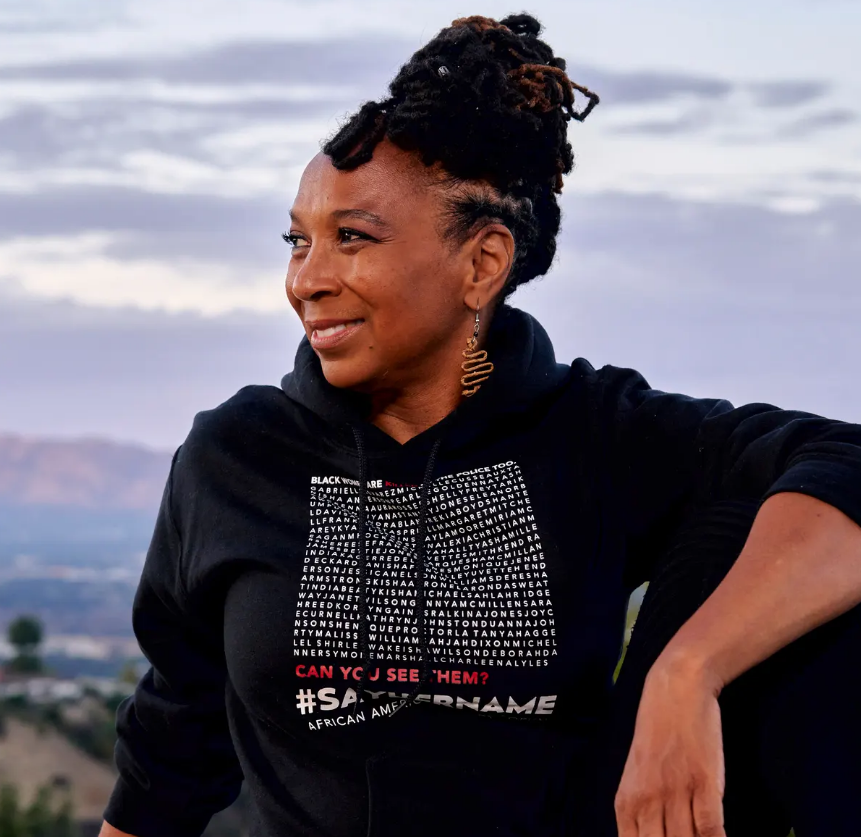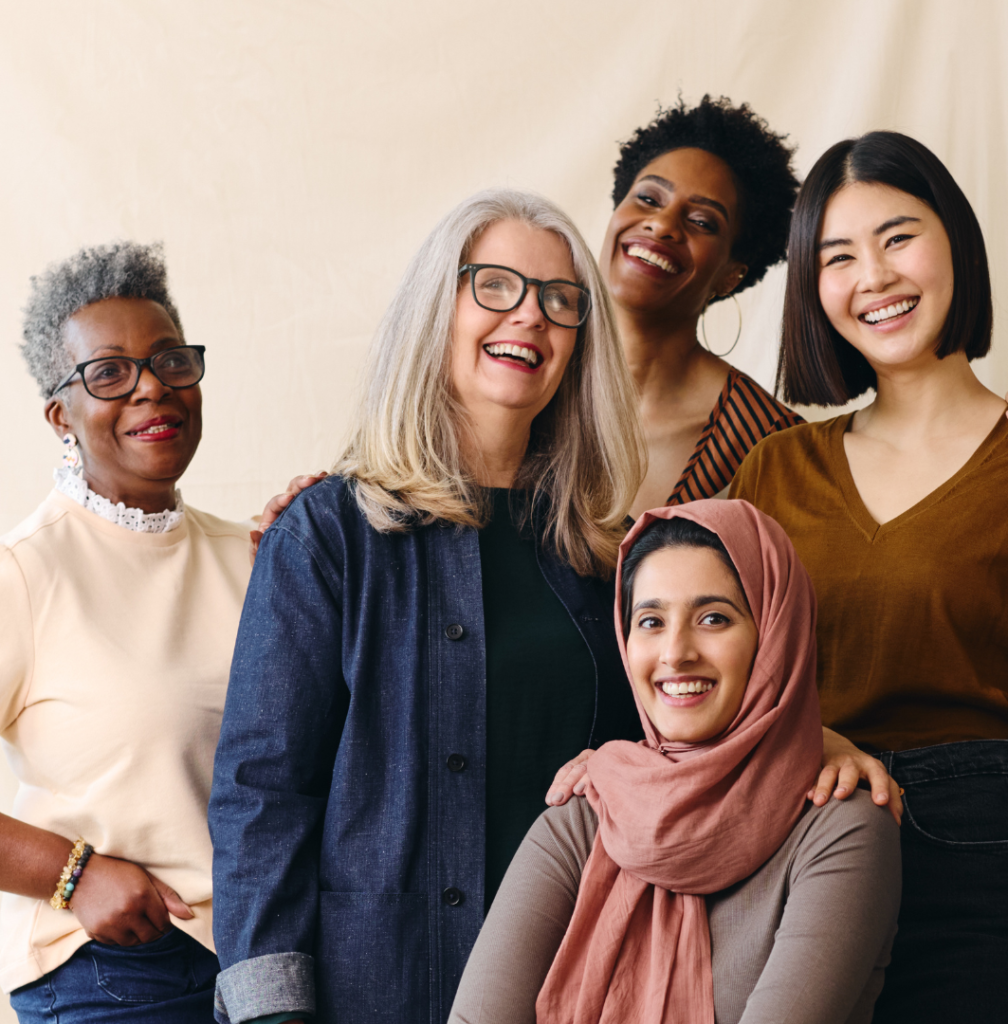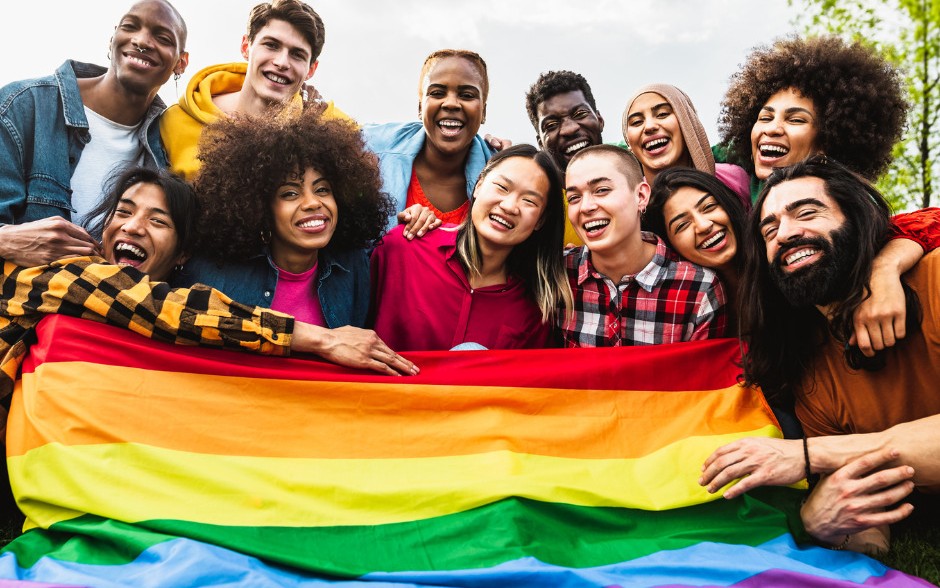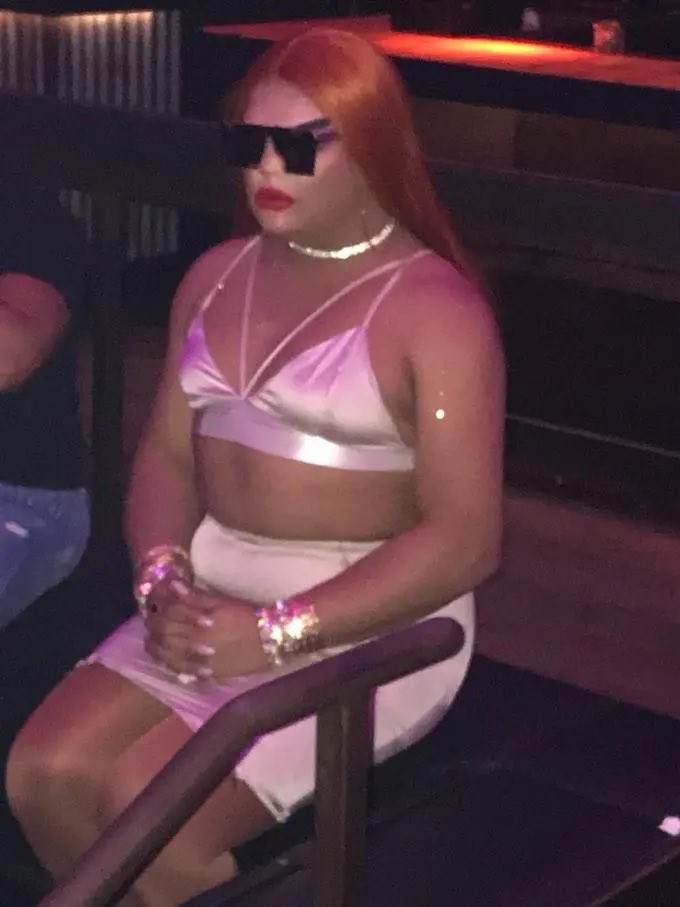
Intersectionality
| History |
| Examples |
| > A Feminist View |
| > Intersectionality in the Workplace |
| > Queer and _____? |
| Visual Representation |
| Works Cited |
Overview
Intersectionality (noun) is a term used to describe the intersection of an individual’s race, class, gender, and other defining characteristics as it relates to systems of oppression, discrimination, and power. This wiki entry will explore how these interlocking systems impact marginalized groups in society.
History / Background
It is said that the 1963 best-selling book, The Feminine Mystique, written by journalist activist and co-founder of the National Organization for Women, Betty Friedan was the catalyst for the fight for gender equality [1,8]. This ongoing movement has since then pushed for gender diversity, expanding the movement beyond the experiences of just middle- and upper- class heterosexual white women [2]. First coined by American Civil Rights Advocate, Kimberlé Crenshaw, intersectionality was initially used to describe these new experiences, including that of Black women. In Crenshaw’s work, she argues that the experiences that Black women face cannot be described by the traditional boundaries of race or gender, but rather, as the intersection of both. This argument fueled the concept of intersectionality and increased inclusivity in the feminist movement [3].
To better understand the connection between feminism and intersectionality, scholars can look at the evolution of Crenshaw’s work over the past few decades. As a graduate of Cornell University, Harvard University, and the University of Wisconsin, Crenshaw has spent a large part of her life dedicated to her research in this matter. Even after the Civil Rights Act was passed in 1965, according to Crenshaw, racism and oppressive structures persisted and would actually remain pervasive in spite of any legal action. Legislative action would instead just be followed by a wall of colorblindness as a method for society, especially the powerful, to stop talking about race. [5]. As Crenshaw stated in an article she wrote for The Baffler, “the Black vote in America is now systematically suppressed under a softer-focus brand of resurgent Jim Crow tactics, empowered by a proudly colorblind set of Supreme Court decisions.” Limited by these tactics, intersectionality worked to fill the gap in research pertaining to the discussion on the inherent racism of legal and societal structures [5].
Examples
A Feminist View
“Unlike the other women, all of whom, again, were white, this woman had no name, no family, no context. The viewer sees her victimized and uncooperative. She cries when shown pictures. She to be forced to view the bloodstained room and her disfigured face. The program does not help the viewer to understand her predicament. The possible reasons she did not want to testify-fear, love, or possibly never suggested. Most unfortunately, she, unlike the other six, is given no epilogue. While the fates of the other women are revealed in the episode, we discover nothing about the Black woman. She, like the “others” she represents, is simply left to herself and soon forgotten.”
Mapping the Margins: Intersectionality, Identity Politics, and Violence against Women of Color
Kimberle Crenshaw
The dive into intersectionality began as a feminist argument. In Crenshaw’s Mapping Margin Intersectionality, she argued that despite movements towards social justice among identity groups, there remained a major issue in identity politics [3]. It wasn’t the fact that it failed to acknowledge everyone’s differences, but rather, failed to recognize intragroup differences. It is important to note that in today’s context, intersectionality exists everywhere; it is a term that gives a some level of explanation to the societal experiences of someone identifying with multiple groups. In feminism, intersectionality lives within all women, not just Black women. In the context of this section, however, illustrating the discourses of feminism and antiracism through the explanation of intersectionality in Black women was crucial to the development and acceptance of the term.
But what does intersectionality look like exactly? Take this for an example, imagine an LGBTQ+ Black woman and a heterosexual white woman who are both of the same working class. Despite both being women and of the same class, they will never experience the same levels of discrimination. As explained in the rules of intersectionality, one can experience racism and homophobia simultaneously, while the other may experience discrimination towards her gender or class. In the core of intersectionality, being a woman does not mean you’ll experience the same levels of discrimination–that is a dangerous assumption that has and may continue to limit gender justice.
Crenshaw’s work focuses on the marginalization of Black women as it relates to domestic abuse and sexual assault to depict how their experiences vary from that of white women. The reason for these differences, as described in Crenshaw’s work, can be explained through these three aspects of intersectionality: Structural, Political, and Representation [3]. Meeting the needs of minority women becomes more challenging and stressful for support groups when intersectional dynamics are not taken into account structurally. Women of race, for example, have significantly lower caseloads in the criminal justice system. Politically, a long history of laws and policies that aim for uniform standards of need are unknowingly oppressing the needs and visibility of non-white women victims. Consequently, it allows for the media to primarily showcase issues, such as the feminist movement or domestic violence, through the representation of white women. The representation section of intersectionality argues just that–it creates a false narrative of women’s experience by choosing to view that of white and non-white women as equal [9].
Queer and _____
In recent years, intersectionality has made its way into queer activism. It has been used as strong evidence in reducing health disparities caused by discrimination against the LGBTQ+ community. Studies consistently show that this group encounters more obstacles in accessing healthcare, experiences inequality in violence and mental health, and faces social injustices [5]. Intersectionality tackles gender hierarchy and prioritization of cisgenderism by examining and reflecting upon the diversity of experiences within marginalized groups, such as the LGBTIQ+ community. Similarly to the fight for gender equality, this lens requires that we, as a society, recognize how different social identities coexist and amount to varying levels of oppression and discrimination. Think of it like this. A gay man has to deal with homophobia. A black man might deal with racism. But a black gay man, however, will deal with homophobia and racism. Now imagine a queer Black woman. Recognizing diversity is the first step to providing resources for different identities, and understanding that no identity is exactly the same.
Why does it matter? Recently, a researcher by the name of Daniel Mayo investigated intersectionality through the intersection of ethnicity, sexuality, gender, and even migratory status [7]. In his research, he argued that Latino Sexual Minority Men (LSMM) were significantly more prone to experience higher levels of oppression because of these identities. The study reported that class 2 (LSMM with intersectional oppression) reported a greater probability of clinically significant depression and posttraumatic stress symptoms. To this end, Mayo concluded that discrimination at the intersection of multiple identities, including sexual, directly influenced their degree of well-being. By failing to recognize the diversity within a community, you contribute to an environment that covers someone’s multitude of identities. Far too many times does a young person of color compromise an identity as a means of fitting into the latter, and the effects it has on one’s mental health are sickening. For the youth, harassment directed towards their identities is significantly more common at their young age. In accordance with a report made by the Trevor Project, LGBTQ youth has been found to be at significantly increased risk for depression, anxiety, substance use, and suicidality [11]. These risks are even greater among youth who also come from different identities, especially the Black community, making them particularly vulnerable to impacts to their mental health [12]. Therefore, it will be challenging for policy and programming to provide appropriate services for different populations if the ways in which violence impacts individuals in diverse degrees are not broken down.
Intersectionality in the Workplace
The question is not so much “where do you see intersectionality?” but “where SHOULD you see intersectionality?” And to that I say, everywhere. To embrace intersectionality is to create an environment that fosters diversity, equity, inclusion and belonging. For specificity, I will focus on the influence of intersectionality within a workplace. Similarly to the other 2 subsections, intersectionality involves the understanding of the interplay of identities. In the context of a workplace, however, this may be as it relates to the dynamic of relationships among individuals and groups, as well as the measures a corporation takes on the recruitment and training process. While this area of research continues to be explored, there are a few researchers who have begun to touch on the matter. In 2018 Alina Tugend released an article in The New York Times outlining the impact that intersectionality has had on select groups as it relates to the workplace [10]. Though the piece is very short, it is concise and is amongst the first to raise concerns about this matter. Tugend refers to research that examined the emotional burden that both men and women of color experience at work in the article. Within this survey, which included participants with a combination of ethnicity and social identities, nearly 58% reported that they were highly on guard at work. Women of color stated that they felt more worried about racial bias at work than sexism. Societal biases and assumptions can sometimes spill into these environments. For instance, black women are often assumed to be an ‘angry black woman’. Latinas can be seen as ‘too emotional’. Asian women are expected to be viewed as the ‘model minority’ [6].
Building an inclusive workplace is impossible without acknowledging intersectionality. Restricting inclusivity makes it difficult for your business to accept opinions and experience sharing. In the process, you are building an unhealthy environment that creates the possibility of health problems related to anxiety and stress.
Visual Representation
Beauty of Intersectionality



Silly Content and Visual
When addressing the complexity of intersectionality, it is important to discuss the arguments against the matter, particularly from the conservative party. Most arguments aren’t so much criticizing the theory, but rather, debate over how it is deployed. Ben Shapiro, an American lawyer, columnist, author, and conservative political commentator, has become the center of these arguments. He argues.
“I would define intersectionality as, at least the way that I’ve seen it manifest on college campuses, and in a lot of the political left, as a hierarchy of victimhood in which people are considered members of a victim class by virtue of membership in a particular group, and at the intersection of various groups lies the ascent on the hierarchy”
Shapiro, Ben. “What is Intersectionality” PragerU
This argument paints it so that the value of your opinion, on the basis of intersectionality, is determined by the number of ‘victim groups’ you belong to. His argument also claims that intersectionality makes it so that racial and sexual identity count for everything and define our experiences. What this argument fails to do, however, is acknowledge the real purpose of intersectionality. When Crenshaw first coined the term in 1989, her goal was to promote individualism through shared, but unique, experiences. It wasn’t to create victim groups, but rather, create spaces where everyone can share the many layers that they are composed of. When thinking about intersectionality, it is important to note that intersectionality is a simply a way of thinking how structures of oppression interlock and contribute to different life experiences. This does not equate to the idea that if you belong to a group then you should be judged not on the basis of your actions, but on the basis of the group you belong to.


Work Cited
- Coaston, Jane. The Intersectionality Wars “Intersectionality, Explained: Meet Kimberlé Crenshaw, Who Coined the Term.” Vox, 28 May 2019.
- Coleman, Arica L. “What’s Intersectionality? Let These Scholars Explain the Theory and Its History.” Time, 6 Nov. 2019
- Crenshaw, Kimberlé. Mapping the Margins: Intersectionality, Identity Politics, and Violence against Women of Color. JSTOR. Jul 1991.
- Crenshaw, Kimberle. “Race to the Bottom | Kimberlé Williams Crenshaw.” The Baffler, 3 July 2019, thebaffler.com/salvos/race-to-bottom-crenshaw.
- Intersectionality|LBGTIQIntersect. www.lgbtiqintersect.org.au/learning-modules/intersectionality/#:~:text=Intersectionality%20%7C%20LBGTIQ%20Intersect-,Intersectionality,specific%20intersection%20of%20multiple%20identities.
- Jay, Shani. “Intersectionality in the Workplace: What HR Needs to Know.” AIHR, 14 Sept. 2023
- Mayo, Daniel, et al. “The Relationship Between Intersectional Oppression and Affirmation and Latino Sexual Minority Men’s Mental Health.” LGBT Health, Mary Ann Liebert, Inc., July 2023.
- Michals. Debra. “Betty Friedan”. National Women’s History Museum. 2017
- Remedios, Jessica D, “How Women of Color Detect and Respond to Multiple Forms of Prejudice” Featured on GenderWatch, Feminist Forum, Nov 2015.
- Tugend, Alina. “The Effect of Intersectionality in the Workplace.” The New York Times, 2 Oct. 2018
- Sparks, Kinzi. “Implications of COVID-19 for LGBTQ Youth Mental Health and Suicide Prevention.” The Trevor Project, 22 Sept. 2023,
- Wesp, Linda M, “Intersectionality Research for Transgender Health Justice: A Theory-Driven Conceptual Framework for Structural Analysis of Transgender Health Inequities” GenderWatch, Lorraine Halinka Malcoe, Oct 2019.
